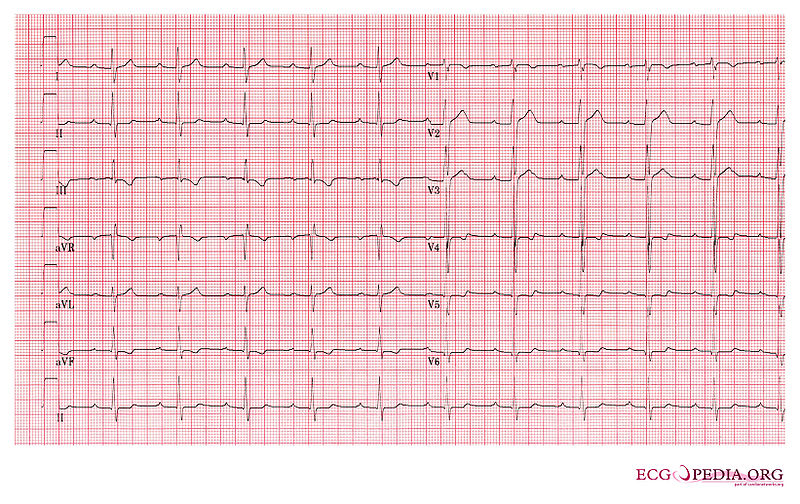Wide complex tachycardias examples: Difference between revisions
Jump to navigation
Jump to search
| Line 46: | Line 46: | ||
Compare with the old ECG (not available, so skip this step) | Compare with the old ECG (not available, so skip this step) | ||
---- | ---- | ||
'''Case 3''' | |||
Shown below is a wide complex tachycardia: | Shown below is a wide complex tachycardia: | ||
[[File:Wide complex tachycardia 1.jpg|center|800px]] | [[File:Wide complex tachycardia 1.jpg|center|800px]] | ||
A broad complex tachycardia at a rate of 160/min with a RBBB configuration. | A broad complex tachycardia at a rate of 160/min with a RBBB configuration is present. The following findings favor VT as a diagnosis: | ||
The following favor VT as a diagnosis: | |||
*Extreme right axis deviation. Both I and avF are downward. | *Extreme right axis deviation. Both I and avF are downward. | ||
*AV dissociaiton | *AV dissociaiton | ||
7.5 mg verapamil was administered, which slowed the VT, and AV dissociation is now more apparent: | 7.5 mg verapamil was administered, which slowed the VT, and [[AV dissociation]] is now more apparent: | ||
[[File:Wide complex rhythm with AV dissociation.jpg|center|800px]] | [[File:Wide complex rhythm with AV dissociation.jpg|center|800px]] | ||
Revision as of 22:08, 13 October 2012
Editor-In-Chief: C. Michael Gibson, M.S., M.D. [1]
Overview
Shown below are examples of wide complex tachycardias and their diagnosis:
VT with right bundle branch block morphology:
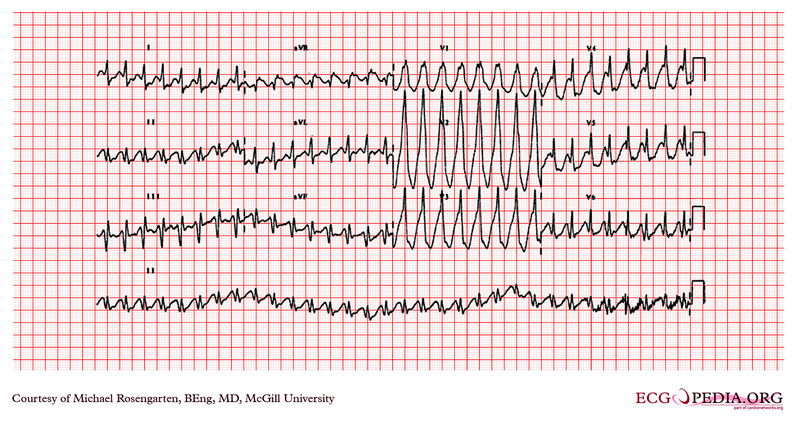
Shown below is a patient with sinus tachycardia and WPW which mimics VT:
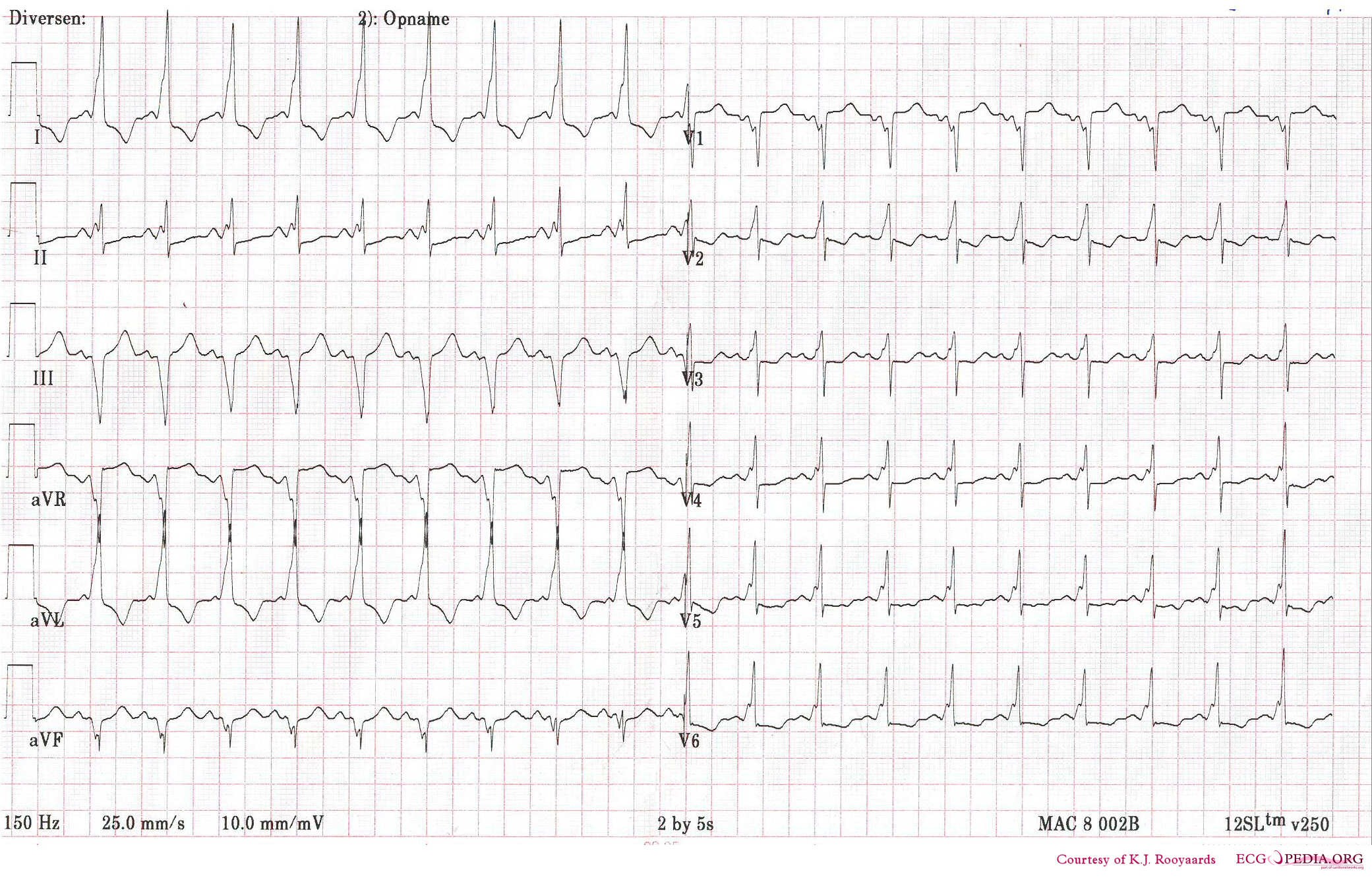
ECG pedia suggests the 7 + 2 method to interpret the above EKG:
Rhythm
- This is a regular rhythm and every QRS complex is preceded by a p wave. The p wave is positive in II,III, and AVF and thus originates from the sinus node. Conclusion: sinus rhythm.
Rate
- Use the 'count the squares' method (a bit less than 3 large squares ~> 300-150-100), thus about 110 bpm and thus sinustachycardia.
Conduction (PQ,QRS,QT)
- PQ-interval=0.10sec (2.5 small squares), QRS duration=0.10sec, QT interval=320ms
Axis
- Positive in I, II, negative in III and AVF. Thus a horizontal (normal) heart axis.
P wave morphology
- The p wave is rather large in II, but does not fulfill the criteria for right atrial dilatation.
QRS morphology
- The QRS shows a slurred upstroke or delta wave.
ST morphology
- Negative T wave in I and AVF. Flat ST in V3-V5.
Compare with the old ECG (not available, so skip this step)
Case 3 Shown below is a wide complex tachycardia:
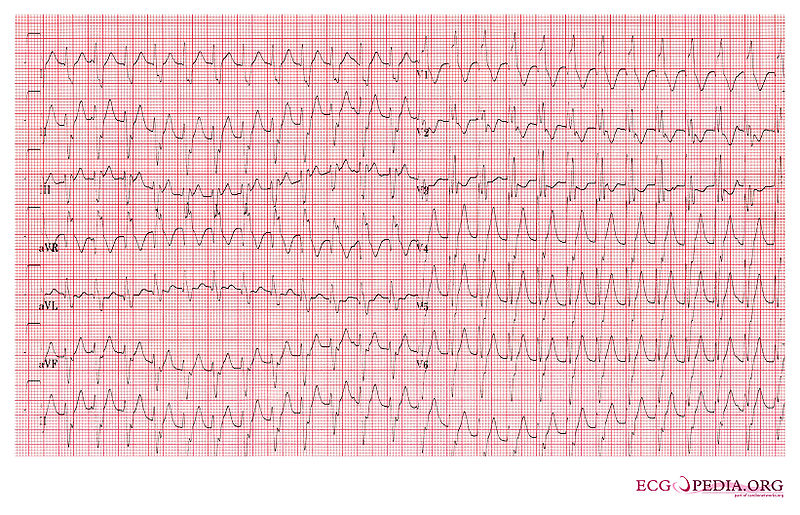
A broad complex tachycardia at a rate of 160/min with a RBBB configuration is present. The following findings favor VT as a diagnosis:
- Extreme right axis deviation. Both I and avF are downward.
- AV dissociaiton
7.5 mg verapamil was administered, which slowed the VT, and AV dissociation is now more apparent:
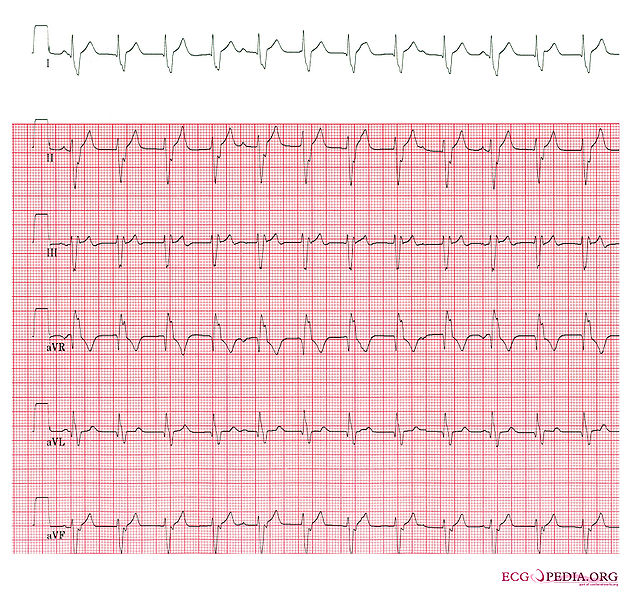
Ultimately converted the patient to sinus rhythm:
